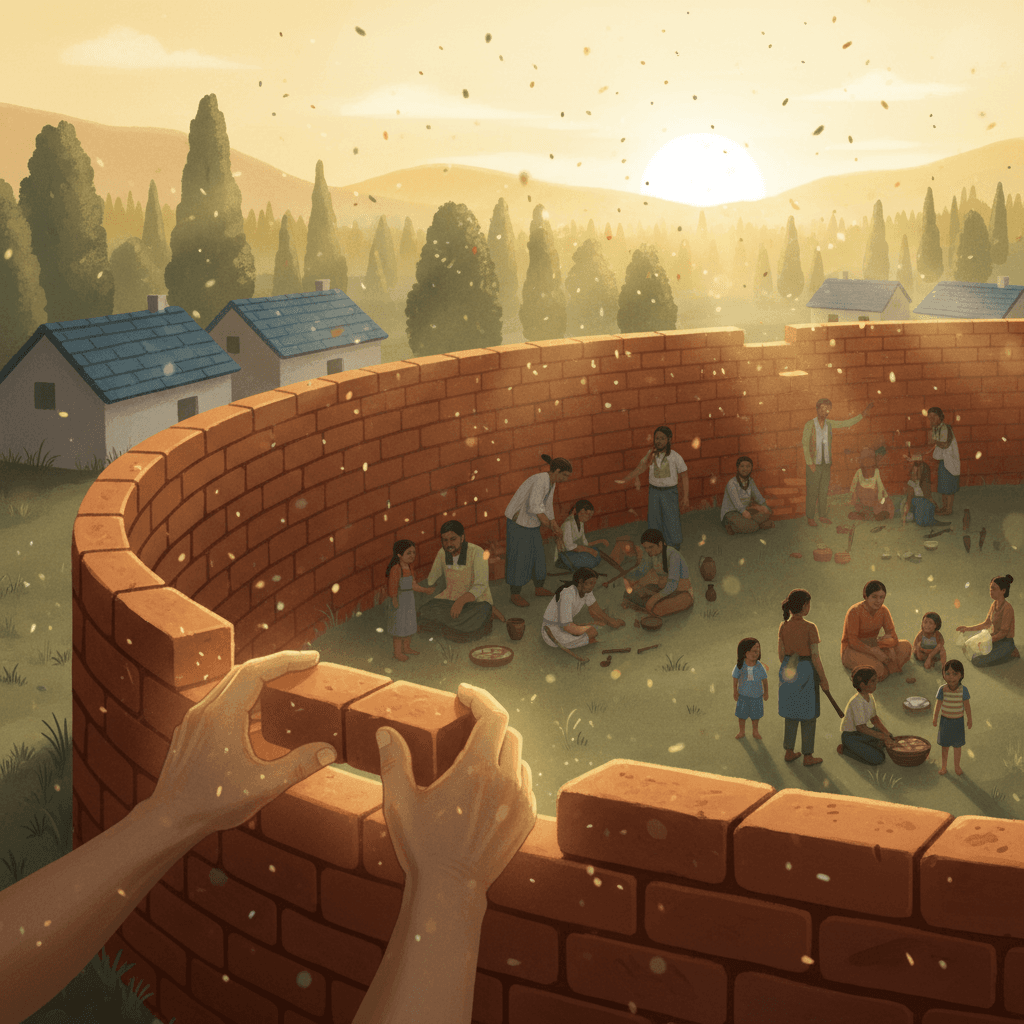Brick by Brick: Skills That Shelter Communities

Build skills like bricks; one strong wall gathers shelter for many. — Booker T. Washington
Foundations of a Protective Craft
At the outset, the metaphor treats each skill as a brick: discrete, well-fired by practice and cured by time. Mortar—habits, ethics, and reliability—binds those bricks into a wall, a coherent mastery that can bear weight. The point is not random accumulation but deliberate sequence: a plumb line of learning where one competency locks into the next. Because walls exist to protect, a finished craft outlives the builder’s immediate needs. A dependable electrician keeps lights on for a block; a thoughtful teacher scaffolds literacy for generations. Thus, personal discipline scales into public shelter. With that architectural logic in mind, we can see why Washington’s vocational emphasis was less about narrow labor and more about constructing durable freedom.
Tuskegee’s Blueprint for Uplift
Historically, Booker T. Washington operationalized this idea at the Tuskegee Institute (founded 1881). Students manufactured bricks and erected many of the campus buildings—learning by doing while quite literally raising the walls that housed their education. In his Atlanta Address (1895), he urged, "cast down your bucket where you are," advocating local skill-building as a foundation for community strength. George Washington Carver extended the blueprint through applied science. His movable school—the Jesup Wagon (c. 1906)—brought crop-rotation techniques and soil care to farmers across the Black Belt. By improving yields and resilience, a single "wall" of agronomic mastery offered shelter to countless households. Washington’s Up from Slavery (1901) captures this ethic: construct competence, then let its stability radiate outward.
The Mastery Multiplier Effect
Moreover, economics explains how one strong wall shelters many. Human capital compounds when skillful people train others (Becker, Human Capital, 1964), and productivity rises through learning-by-doing spillovers (Arrow, 1962). When mastery anchors a shop, a clinic, or a school, complementary roles take shape around it—suppliers, apprentices, and partners—forming the equivalent of an architectural buttress. Historical philanthropy amplified the effect. Washington’s collaboration with Julius Rosenwald helped seed over 5,000 Rosenwald schools across the U.S. South (1912–1932). Each school became a community keystone, concentrating talent and hope. Likewise, industry clusters thrive where a few exemplary practitioners model standards and methods (Porter, HBR, 1998). In every case, the return on mastery is not merely private income but public capacity.
Designing Skill Stacks That Hold
Practically, building skills like bricks means sequencing for load-bearing strength. Start with foundational literacies—numeracy, writing, tool use—then add domain bricks: measurement, safety, troubleshooting. Capstones integrate them into a wall: a finished project, a certification, a shipped product. This is how competencies interlock rather than wobble. The method benefits from deliberate practice—targeted, feedback-rich repetition (Ericsson et al., Psychological Review, 1993). Apprenticeships, peer reviews, and reflective logs act as the mason’s level, keeping courses straight. Over time, breadth supports depth: T-shaped professionals combine a core specialty with adjacent fluencies, giving the wall both height and buttressing. The result is resilience—skills that stand in bad weather, not just on sunny days.
Institutions That Spread the Roofline
Institutions supply scaffolding so walls rise faster and safer. Community colleges deliver stackable credentials; union halls and trade schools run apprenticeships that blend wages with instruction; libraries and makerspaces democratize tools. The German and Swiss dual systems show how classroom theory and workplace practice can interlock from the start to prevent skill gaps. Crucially, equity widens the shelter. Scholarships, childcare, and transit support help more learners stay on the scaffold long enough to finish. The Rosenwald model offers a precedent: local matching funds paired with outside grants built buy-in and longevity. When policy lowers the cost of learning and employers co-invest, communities don’t just add bricks—they complete weatherproof rooms.
Modern Masonry—Code, Care, and Climate
Looking forward, today’s high-utility walls are rising in software, healthcare, and green trades. A small team of open-source maintainers fortifies infrastructure that millions rely on; the Linux Foundation’s stewardship exemplifies how a concentrated craft can underwrite global stability. Similarly, well-trained nurses and technicians elevate whole hospitals’ outcomes; weatherization crews reduce bills and emissions across neighborhoods. The ethic remains consistent: mastery plus service. Build a wall sturdy enough to lean on, then invite others beneath its eaves through mentorship, documentation, and fair hiring. In doing so, we fulfill Washington’s vision: the disciplined labor of one becomes the dependable shelter of many, and communities learn to withstand storms together.